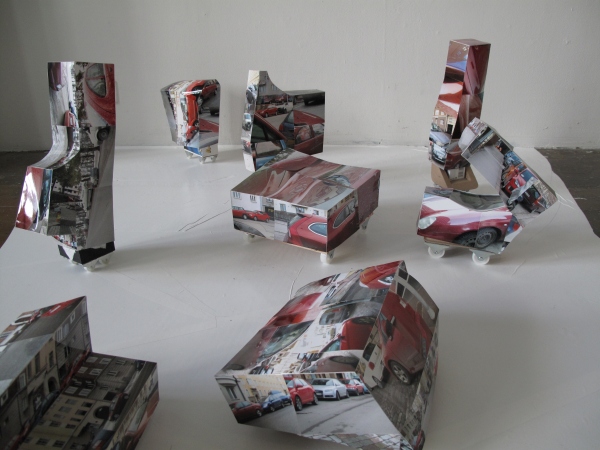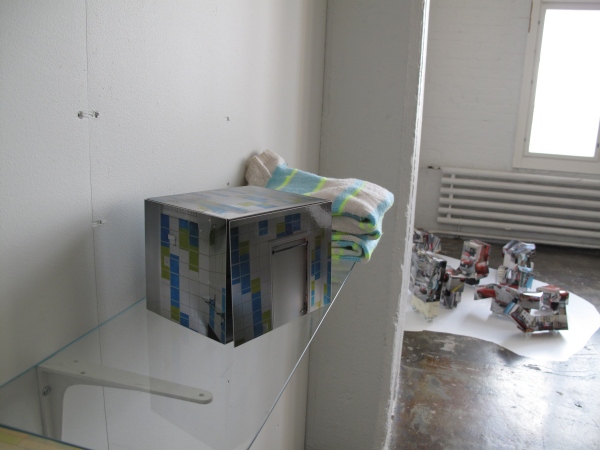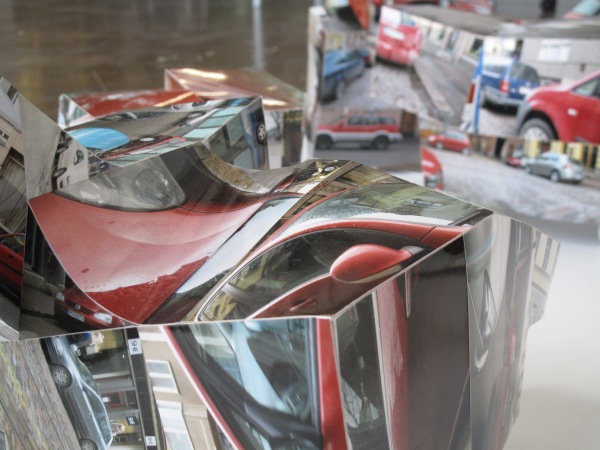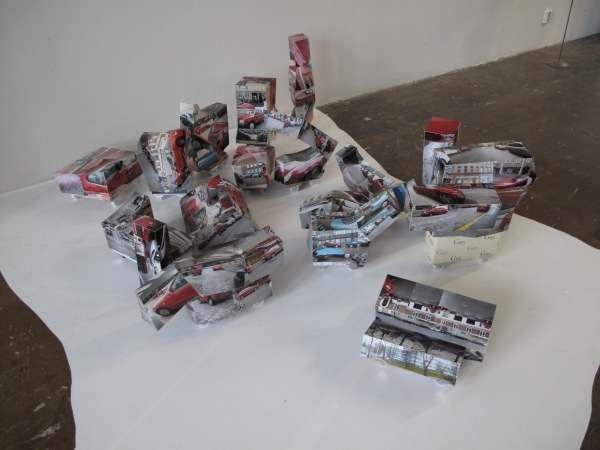By Walking, 15.08. – 18.06.2015,
MUU Cable, Helsinki
My exhibition consists of two installations. My method in them is walking, which acquires different meanings in both works. In one, walking is an instrument of measurement to determine distances in the other it is a method for charting course, for engaging with the urban space and subverting its geometry and architecture. Colours are important in both works they allude to a visual game in which rules are determined through the choice of colour. The process made me realise that the act of choosing also entailed the exclusion of that which was not chosen.
In “Tammimäki 3416 Steps” I used walking as a method to determine distances. I fixed a spool of thread on my leg, and tied the end of the thread to a suitable spot to mark the start of the walk. The notes from the walk, its distance, consist of the nmber of steps and the length of the unwound thread. I later devised various methods for using the notes to represent the walks.
“Permission to Cross the Street” is told in a town of red cars; it is story of angles, of intersecting planes. In it, I seek angles. Angle is the point where the view, the focal point of my gaze, changes as my direction changes. The gaze finds another point of fixation, another point of focus, perhaps the side of a car and a fragment of paving, of a reflection of a row of windows on the shiny side of a car. From these images, I compile a three –dimensional object that is a kind of route map.
From the boxes, I build a kind of skeleton on which I lay out my path in photo prints. The shape outlined by the pictures follows the shape of the box. At some points, I have cut the pictures to delineate a three-dimensional shape that is independent of the shape of the boxes. All that was needed as a clue to combine pictures was a visual element that continued from one picture to the next, or a blurring of the boundary between pictures. For myself, however, the most interesting things were the places I call narrative angles. They are the intersections of objects where the orientation of the surface changes. The result is physically an angle, yet visually it entails the disappearance of the angle.
Copyright © Niran Baibulat




